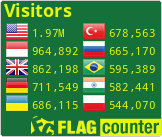Analisis Faktor Penyebab Runtuhnya BMT LRisma dan Bmt SSB Lampung Timur: Studi UU No. 4 Tahun 2023 tentang Penguatan Sektor Keuangan
DOI:
https://doi.org/10.32332/muamalah.v2i1.7058Keywords:
BMT, Pailit, SyariahAbstract
The existence of BMT in the Indonesian economy is needed, because of the purposethe establishment of BMT is to improve the quality of economic business for welfaremembers in particular and society in general, who have not been reached by the InstitutionBanking Finance. BMT (Bait al-Mal wa at-Tamwil) can also be used asalternative for the prohibition of usury in conventional bank interest, sothe desire of Muslims to be able to carry out financial transactions with Islamic nuanceshas been fulfilled. The research objective is to understand the factors that cause itthe fall of BMTs in East Lampung, namely BMT L-Risma and Sumber Sejahtera Bersama(SSB) and to find out how the status of legal entities and supervisionBMT with the Law no. 1 of 2013 concerning Financial InstitutionsMicro. This research is a field research (Field Research). data source whichused in this study include primary, secondary and tertiary data sources. Methoddata collection namely observation, interviews and documentation. Overall analysisthe problem that the writer got was then analyzed using inductive thinking methods. The results of the study are as follows (a) The factors that led to its downfallBMTs in East Lampung are BMT L-RISMA and BMT Sumber Sejahtera Bersamacaused by 2 factors, namely internal factors including, such as misuse of BMT funds,Bad 3rd party financing, liquidity risk, financing risk, no LPSand DPS supervision is still weak. External factors include product distributionnot quite right, the product marketing strategy is not good, there is still financingwith Conventional Banks and (b) BMT Legal Entity Status in Law No1 of 2013 to become a sharia-based MFI that is more comprehensive and deepin terms of tighter supervision which is now supervised by the Financial Services Authority(OJK).
Downloads
Downloads
Published
Issue
Section
License
Copyright (c) 2023 Zainal Arifin

This work is licensed under a Creative Commons Attribution-ShareAlike 4.0 International License.
All articles in the Mu'amalah: Jurnal Hukum Ekonomi Syariah can be disseminated on condition that they still include the identity of the article and the source (Mu'amalah). The publisher is not responsible for the contents of the article. The content of the article is the sole responsibility of the author.
Authors who publish this subject agree to the following terms:
First, the Authors retain copyright and grant the journal rights from the first publication with the work simultaneously licensed under a Creative Commons Attribution-ShareAlike 4.0 International License that allows others to share the work with an acknowledgement of the work's authorship and initial publication in this journal.
Secondly, the authors can enter into a separate or an acknowledgement of its initial (e.g., post-institutional repository or publish it in a book) publication in this journal.
![]()
Third, the authors are permitted and encouraged to post their work online (e.g., in institutional repositories or on their website) before publishing work is cited.








